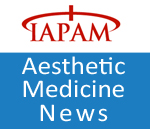Botox Reduces Pain From Postmastectomy Reconstruction
Botulinum toxin A (Botox) has a new off-label role in significantly reducing the postoperative pain that has discouraged many women from accepting silicone implant breast reconstruction following mastectomy.
Allen Gabriel, MD, assistant professor of surgery at Loma Linda University in California, has demonstrated in a small but hypothesis-driven randomized clinical trial that botulinum effectively addresses the sources of severe pain associated with the procedure. He presented his findings here at the International Society of Aesthetic Plastic Surgery 20th Biennial Congress.
Silicone breast implantation often involves the positioning of a temporary expander implant between layers of the pectoralis major chest muscle, which is filled with water serially to create a pocket where a permanent implant will reside. The muscle often contracts and spasms in response to the expansion, causing pain, Dr. Gabriel noted.
He and collaborator G. Patrick Maxwell, MD, who also practices at Loma Linda, theorized that injections of botulinum could offer relief by temporarily paralyzing the muscle, causing it to remain flaccid. That way, fewer spasms would occur and less pain would arise.
Thirty consecutive breast cancer patients scheduled for mastectomy with silicone gel implant breast reconstruction were randomly assigned to 1 of 2 groups: 40 units of botulinum injected into each pectoralis major through 4 serial injections in 0.5 cc increments; or the same routine procedure using saline solution as a placebo. Procedures were performed at the Southwest Washington Medical Center, in Vancouver, where Dr. Gabriel is also chief of plastic surgery.
The women who received the botulinum injections were far more comfortable after surgery than those who received placebo, Dr. Gabriel told Medscape Medical News. Patient responses were measured at 3 time points during and after the procedure with a 10-point visual analog scoring (VAS) test, where a score of 1 signified an absence of pain and 10 was associated with unbearable pain. According to Dr. Gabriel, the mean VAS score at the 3 time points for the botulinum group was about 4, and was significantly lower than the mean VAS score of 7 seen in the placebo group (P < .05).
No notable differences in the use of narcotic, muscle relaxants, or anti-inflammatory drugs were observed for the 2 groups in the first 3 days after surgery. However, from days 7 to 45 of recovery, the botulinum group used significantly fewer doses of narcotics and muscle relaxants (P < .05).
Additionally, Drs. Gabriel and Maxwell found a statistically significant increase in the volume of expansion per office visit, leading to full expansion more quickly in the botulinum group than in the placebo group (P < .05).
No adverse reactions were reported.
The researchers had planned to recruit more patients, but the randomized portion of the trial was halted when potential subjects began requesting palliative pain treatment and expressed fear about being selected for the placebo group.
This study is similar to one reported in 2004 by Rakhshanda Layeeque, MD, and colleagues from the University of Arkansas for Medical Sciences, in Little Rock (Ann Surg. 2004;240:608-613). In that trial, women injected with botulinum in the pectoral muscles in the time between mastectomy and tissue expander placement reported less postoperative pain and used fewer narcotics in the first 24 hours after surgery and in the final expansion period than patients who did not receive the agent.
Dr. Gabriel has performed more than 100 silicone breast reconstructions following mastectomy since 2008.
“The use of [botulinum] is changing the reputation of expanders as a painful part of breast reconstruction,” he told Medscape Medical News. “Before we started using [botulinum], patients leaned toward autologous reconstruction because of anxiety about expander pain. Now, patients are more inclined to choose expanders.”
The cost of the off-label use of botulinum was covered by a grant from the Southwest Washington Health System. No support originated from Allergan, the manufacturer of Botox. Dr. Gabriel and Dr. Maxwell have disclosed no relevant financial relationships.
International Society of Aesthetic Plastic Surgery (ISAPS) 20th Biennial Congress: Abstract 45. Presented August 17, 2010.
James Brice
James Brice is a freelance writer for Medscape
Source: by James Brice for Medscape Daily News at http://www.medscape.com/viewarticle/727235






Comments (1)
Links to this Post